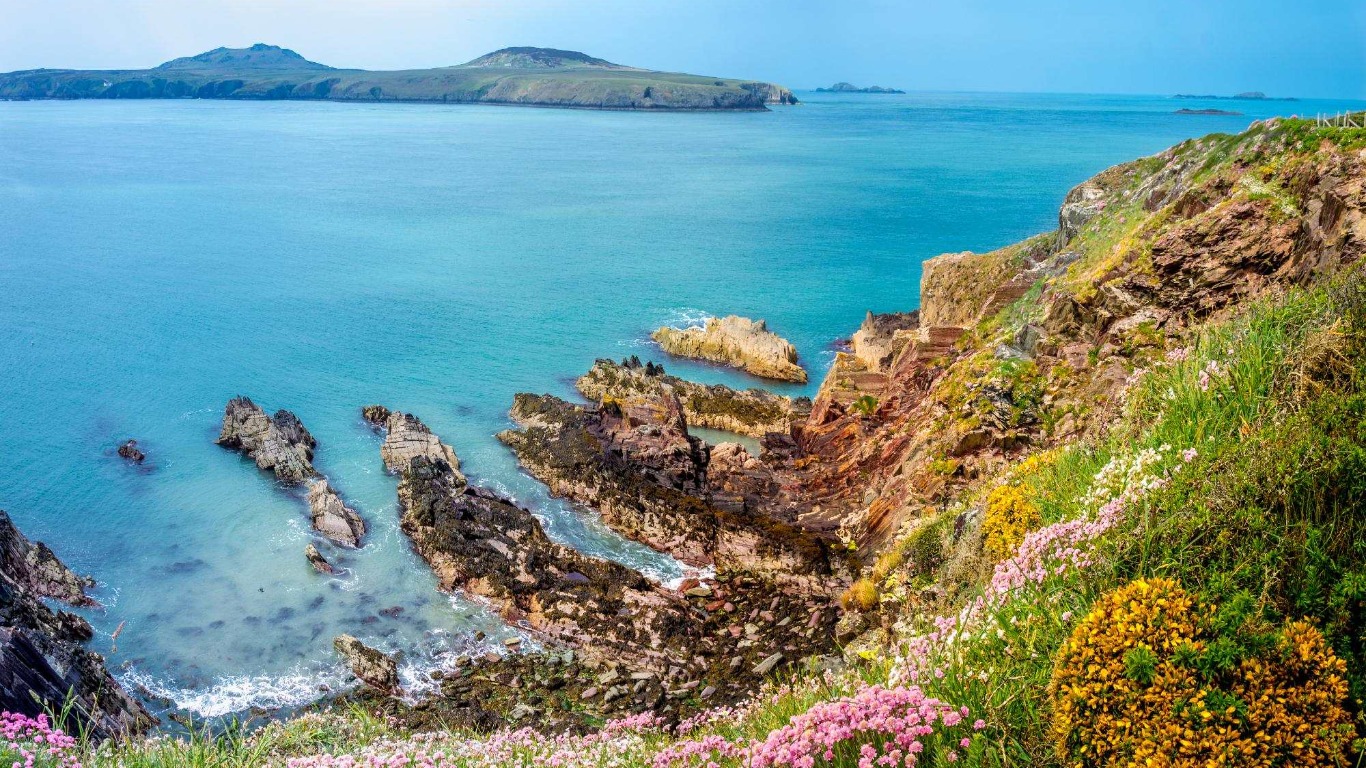Pembrokeshire road trip: the top things to do, what to eat and where to stay
With glorious coastal walks, sandy beaches and colourful seaside towns all within easy reach of each other, Pembrokeshire offers relaxed road tripping without clocking up the miles. So load up the car and get ready for the winding country lanes, bracing sea air and chilled-out pace of Pembrokeshire.
Why go to Pembrokeshire?
Just five hours’ drive from London and two hours from Cardiff, Pembrokeshire has just as much to offer as more celebrated coastal regions of the UK like Cornwall or Devon, but with fewer crowds and often cheaper prices.
It’s most famous for the Pembrokeshire Coast National Park, the UK’s only national park established mainly to protect the coastline, which covers one third of the county and offers a huge range of outdoor adventures including hiking, coasteering, climbing and sailing.
For those who prefer to keep their feet on solid ground, Pembrokeshire also offers history and culture galore, from the magnificent Pembroke and Carew castles to the shops and restaurants of St David’s and Tenby, there really is something for everyone.
Top 5 things to do in Pembrokeshire
1. Stretch your legs along the Pembrokeshire Coast Path
With 190 miles (306km) of rugged coastline, the Pembrokeshire Coast Path is the region’s top attraction. The stunning route offers some of the most breathtaking coastal scenery anywhere in the UK, with golden beaches, plunging cliffs, sheltered bays and windswept headlands.
The route stretches from Amroth in the south to St. Dogmaels in the north, and with well-managed paths and clear signposting, it’s easy to stop off and explore as much or as little of it as you fancy.
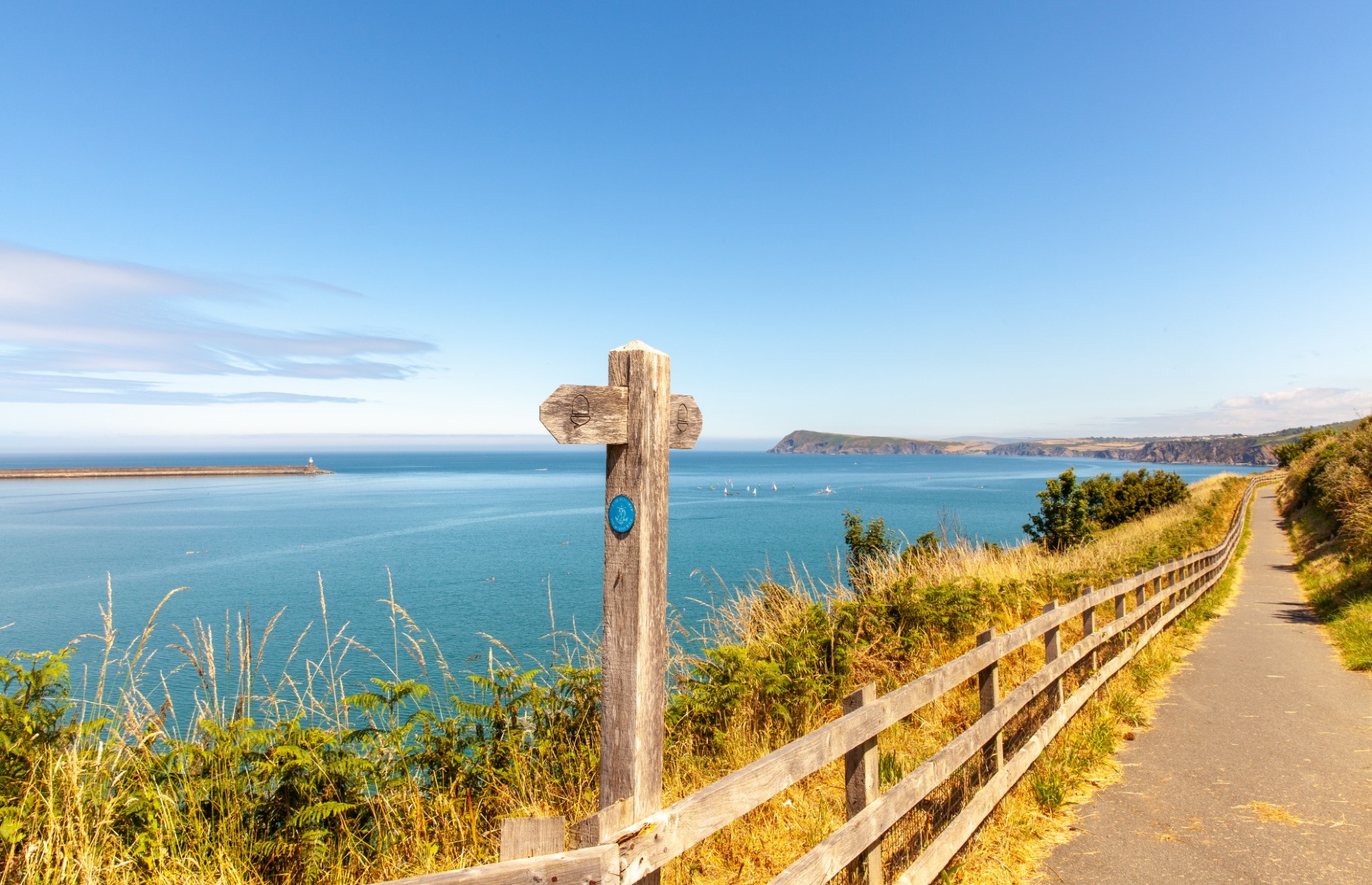 Alice-D/Shutterstock
Alice-D/Shutterstock
2. Make friends with puffins on Skomer Island
Between April and August every year, Britain’s coastline becomes home to one of the world’s cutest seabirds: the Atlantic puffin. Hundreds of thousands of them return to UK shores to breed and raise their chicks, and Skomer Island in Pembrokeshire is one of the best places to see them.
Boats to Skomer depart every half hour in the mornings from Martin’s Haven, giving you the chance spend a joyous few hours exploring Skomer’s rugged landscapes and getting close to these comical little ‘clowns of the sea’.
 Passport & Pixels
Passport & Pixels
3. Explore Wales’ dramatic past at Pembroke Castle
Pembroke Castle was the birthplace in 1457 of Henry VII, the first king in the legendary Tudor Dynasty, and has witnessed bloody wars and uprisings for over 1,000 years. Today it still stands proud on a rocky outcrop with impressive views across the surrounding area.
You can almost hear the whispering of ghosts from centuries past as you climb its solid stone ramparts or explore its echoey halls and staircases.
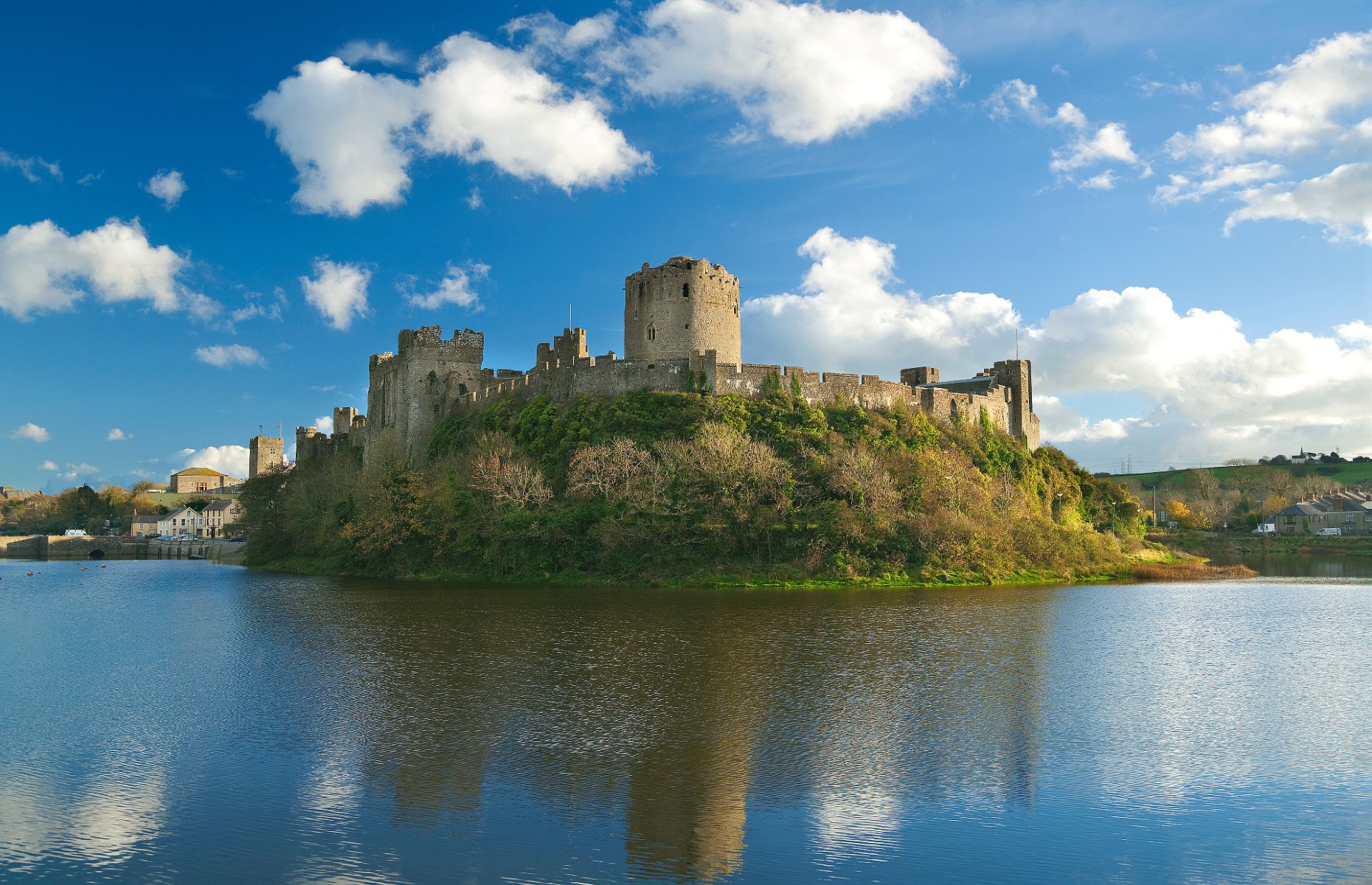 Billy Stock/Shutterstock
Billy Stock/Shutterstock
4. Visit the UK’s smallest city
The size of a small town with a population of less than 2,000, St David’s qualifies as a city because of its magnificent cathedral, dedicated to the patron saint of Wales.
Spend some time admiring its ornate chapels, stained-glass windows and beautifully-decorated ceilings before heading to one of the city’s friendly pubs to enjoy some warm Welsh hospitality.
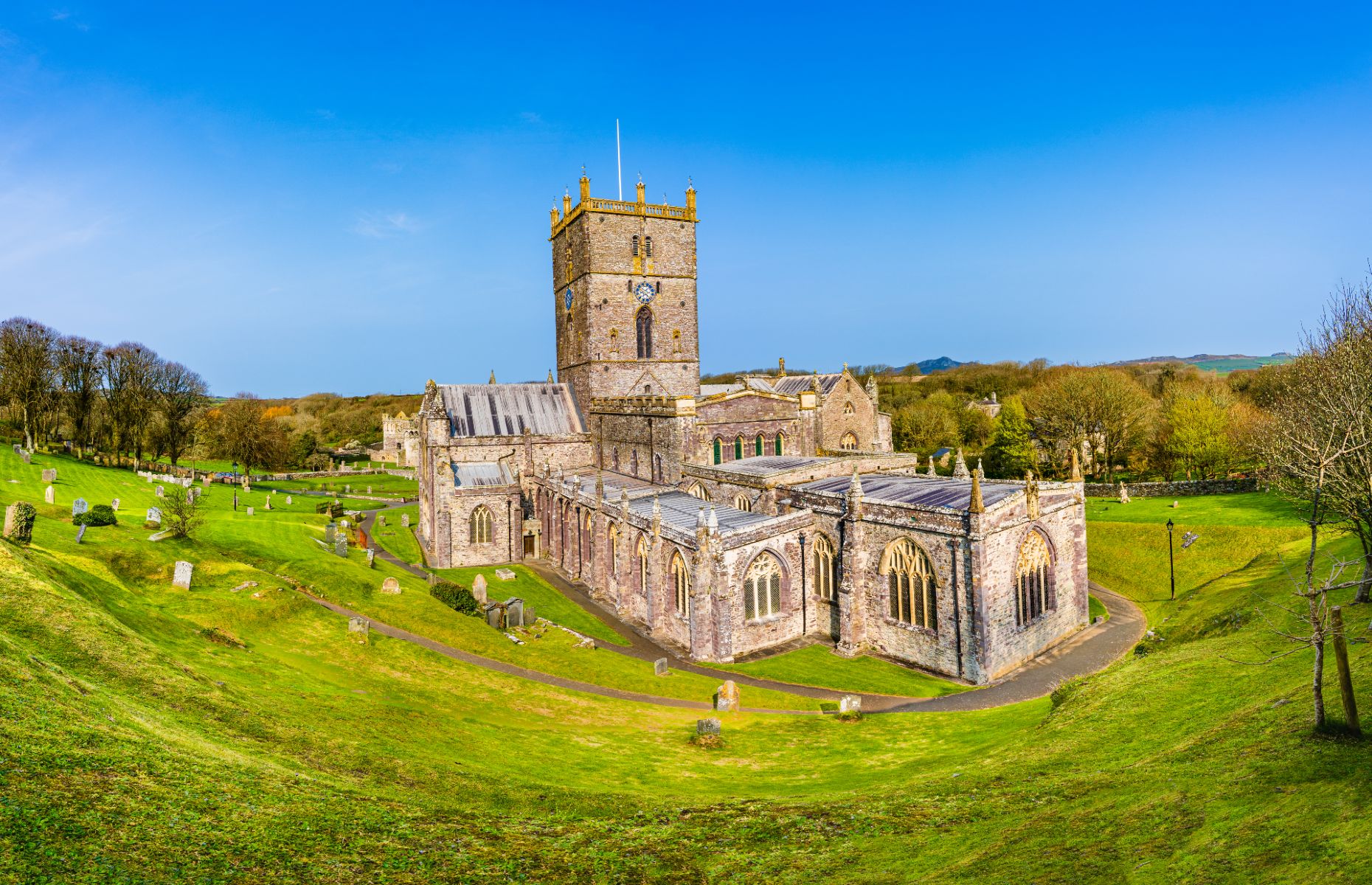 PhotoFires/Shutterstock
PhotoFires/Shutterstock
5. Build sandcastles in Tenby
With two sheltered, sandy beaches, a quaint esplanade crammed with colourful guesthouses, an idyllic harbour and a walled Old Town centre full of shops and cafés, Tenby is the quintessential British seaside town.
While the weather might not always play ball, there’s plenty to do even when it’s wet, from exploring the Tenby Museum and Art Gallery to taking a boat trip to visit the monastery at nearby Caldey Island.
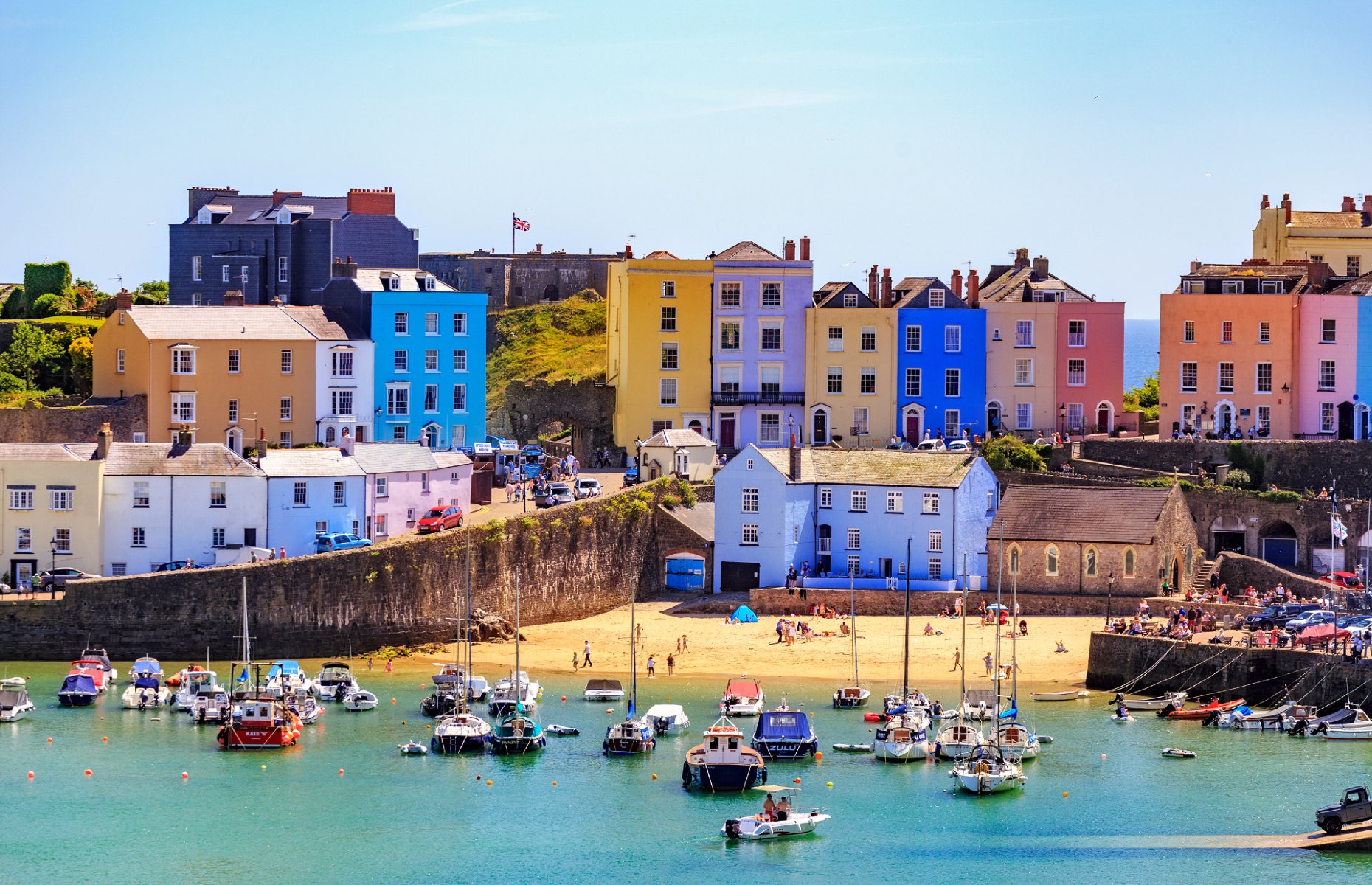 Lukasz Pajor/Shutterstock
Lukasz Pajor/Shutterstock
What to eat in Pembrokeshire
With so much coastline, it won’t come as a surprise to learn that Pembrokeshire is renowned for its fish and seafood. Traditional fish’n’chips is on the menu almost everywhere and in Pembrokeshire they know how to do it right, with firm, moist cod or haddock cloaked in light and crispy batter. Eat it piping hot from the box overlooking the sea for the proper authentic experience.
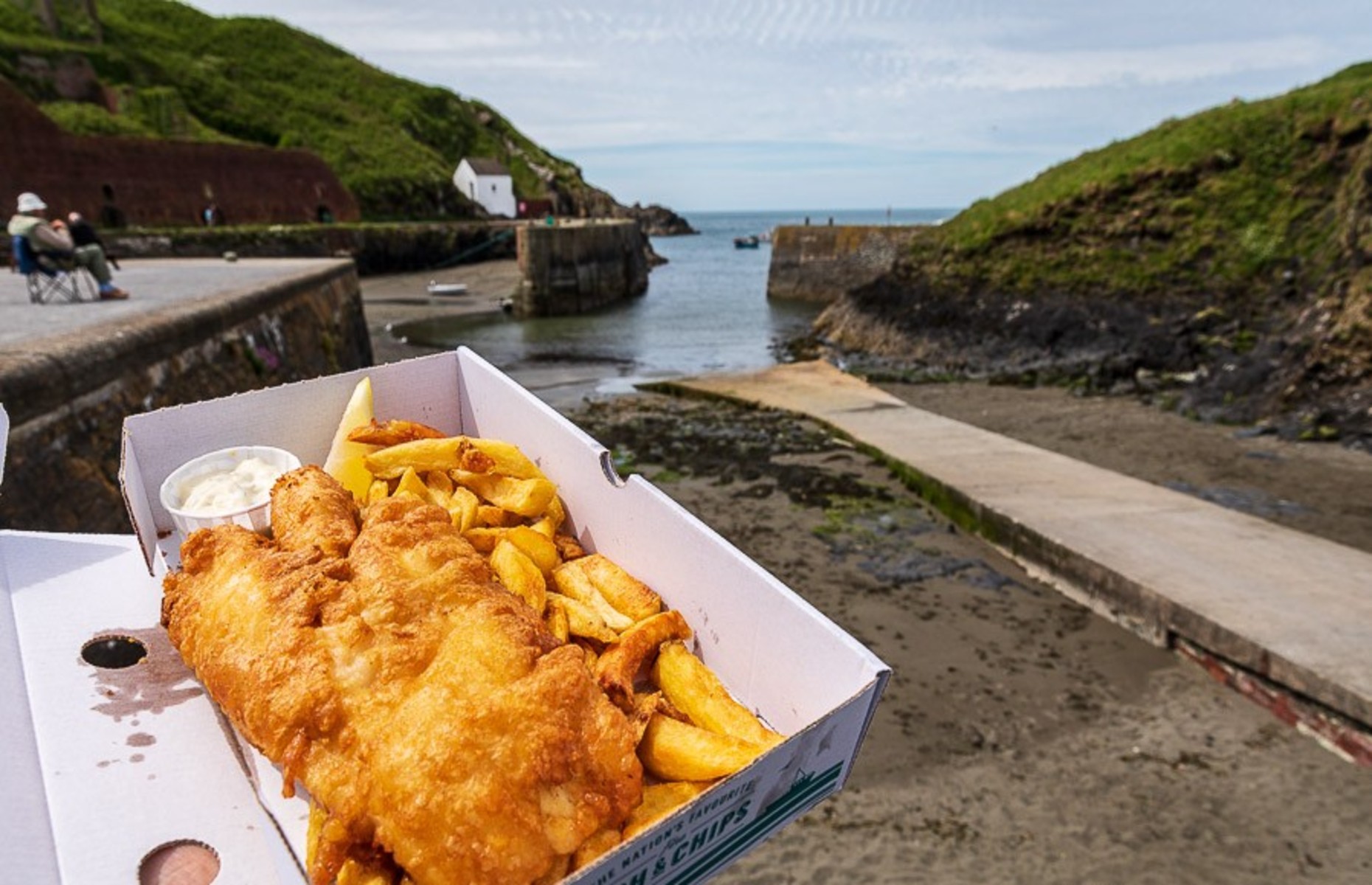 Passport & Pixels
Passport & Pixels
Agriculture is one of the main industries, so there’s also plenty of local beef, lamb and vegetables to enjoy, as well as farmers’ markets and food festivals like the St David’s Food Market, Haverfordwest Farmers Market and the Pembroke Potato Festival – Pembrokeshire Early new potatoes are so special they even have European Protected Geographical Indication (PGI) status.
For those with a sweeter tooth, why not try a Welsh cake – a dense, fruity, flat scone best served warm with a thick layer of gently-melting butter. Or pop into one of Tenby or St David’s many artisan sweetshops for handmade local fudge – try the butterscotch or salted caramel and almond for something to really make the dentist wince.
 D Pimborough/Shutterstock
D Pimborough/Shutterstock
How to get to and around Pembrokeshire
Pembrokeshire is well-connected to the rest of the UK via the airports and railway stations at Cardiff and Bristol and along the M4 motorway from London. Once you’re in Pembrokeshire, getting around is easy with several good A-roads and minimal traffic, meaning nothing is more than an hour away.
Local roads are often single-track and winding, with verges bursting with pink and purple wildflowers in summer. Once you get over the nerves of negotiating a car coming the other way you’ll soon start to enjoy these twisty country lanes – being forced to slow down just gives you more time to enjoy the beautiful Pembrokeshire scenery.
READ MORE: 30 reasons to visit Wales
The ultimate Pembrokeshire road trip
Day 1: Tenby, Pembroke Castle, Carew Castle
Begin your adventures in: Tenby. Situated on Pembrokeshire’s South Coast, Tenby is one of Wales’ most popular seaside towns, with three sandy beaches, a ruined castle, a historic island fort, a picturesque harbour, and plenty of gift shops and cafés.
 Richard Whitcombe/Shutterstock
Richard Whitcombe/Shutterstock
Base yourself at: Panorama Hotel. Located in a Victorian house right on the esplanade, this charming guesthouse boasts individually-decorated rooms, sea views over St Catherine’s Island, and is just a few minutes’ walk from the town centre.
Find history in: Pembroke and Carew Castles. Just a short drive from Tenby and about 15 minutes from each other, these are two of Wales’ most impressive and fascinating castles. Pick one, or if you’re a real history buff, visit both!
Learn about the exploits of the lords and knights who lived and died here, and don’t miss a walk round the castle pond to really admire the castles’ magnificence from across the water.
 Billy Stock/Shutterstock
Billy Stock/Shutterstock
Dine in: Blue Ball Restaurant. This local favourite in the heart of Tenby Old Town prides itself on its fresh, locally-sourced produce. Unsurprisingly for a seaside town, fresh fish is at the heart of the menu, but there are also meat dishes like the braised pork belly and vegans can enjoy the curried cauliflower steak.
READ MORE: 6 reasons to visit Tenby
Day 2: Barafundle, Bosherston, St Govan’s Chapel
Breakfast at: Fuchsia Caffe. This popular and dog-friendly café gets rave reviews for its generous fry ups and wide selection of brunches. Make sure you add a Welsh laver cake to your breakfast for the full experience.
Drive to: Barafundle Bay. This pristine sheltered bay, with its wide sandy beach and crystal-clear blue water, regularly wins ‘Best Beach’ awards. Enjoy the clifftop views during the 30-minute walk from the car park, and don’t forget your swimming costume!
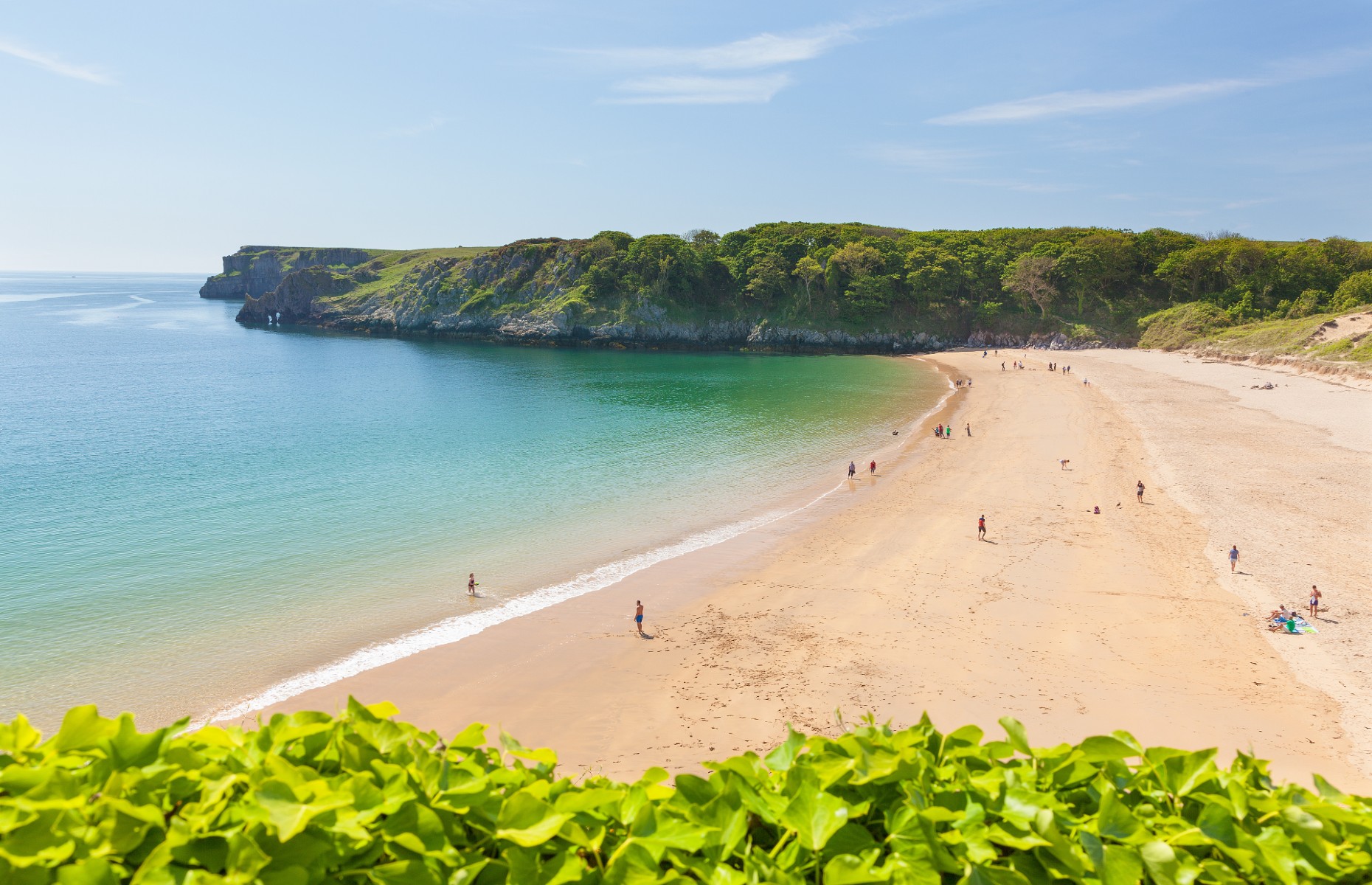 Billy Stock/Shutterstock
Billy Stock/Shutterstock
Take a walk round: Bosherston Lily Ponds. Just a short drive from Barafundle Bay, these man-made lakes were once part of the ornamental landscape belonging to the Stackpole country estate. Admire the huge ponds covered with waterlilies and look out for herons and otters as you wander the shady pathways.
Lunch at: The Stackpole Inn. This village pub has won numerous awards for its excellent food, so book ahead to avoid disappointment. Don’t miss the signature dish of pan roasted lamp rump of Welsh lamb with pearl barley, but save room for a selection of local Welsh cheeses to follow.
Step back in time at: St Govan’s Chapel. This tiny chapel, once a hermit’s cell, is built right into the side of the cliff. Legend says that if you count the steps going down and back up the number is never the same.
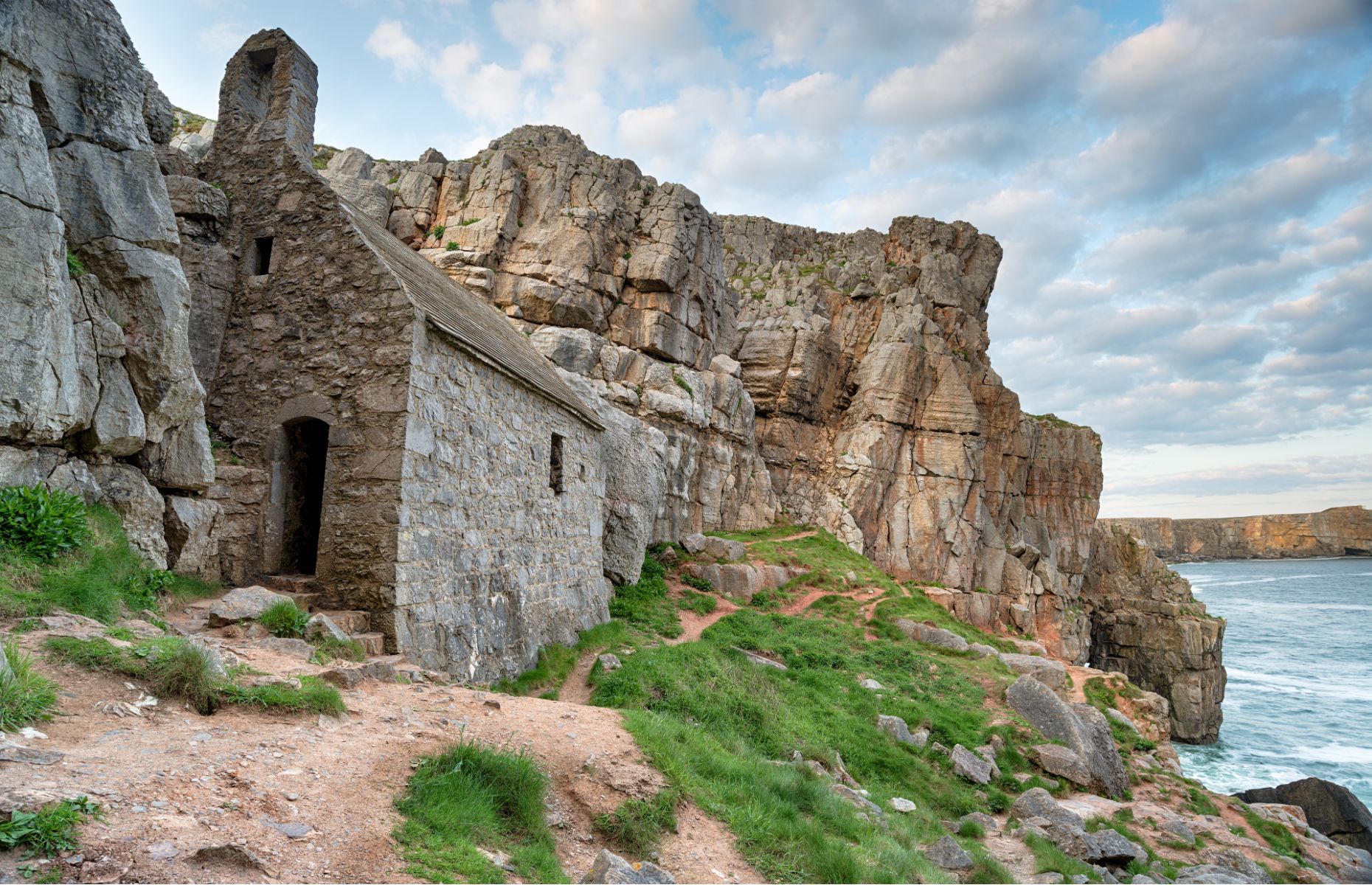 Helen Hotson/Shutterstock
Helen Hotson/Shutterstock
Walk the cliff path to: the Green Bridge of Wales and Elegug Stacks – a dramatic natural arch and limestone stacks jutting out into the sea. The walk from St Govan’s takes about 1.5 hours each way and offers dramatic coastal views and the chance to spot wildlife including the guillemots after which the Stacks are named – elegug means guillemot in Welsh.
Overnight at: Portclew House. A beautiful and quiet country guesthouse with comfy beds, generous breakfasts and perfectly manicured gardens located within easy reach of all the attractions on Pembrokeshire’s south coast.
Day 3: Skomer Island to Little Haven
Check out the views at: Martin’s Haven. The boat to Skomer Island leaves from a tiny harbour at Martin’s Haven on Pembrokeshire’s western tip, and you must check in an hour before. Use the waiting time to climb the hill to the lookout and enjoy the views of Skomer and its neighbour Skokholm Island, but don’t miss your departure!
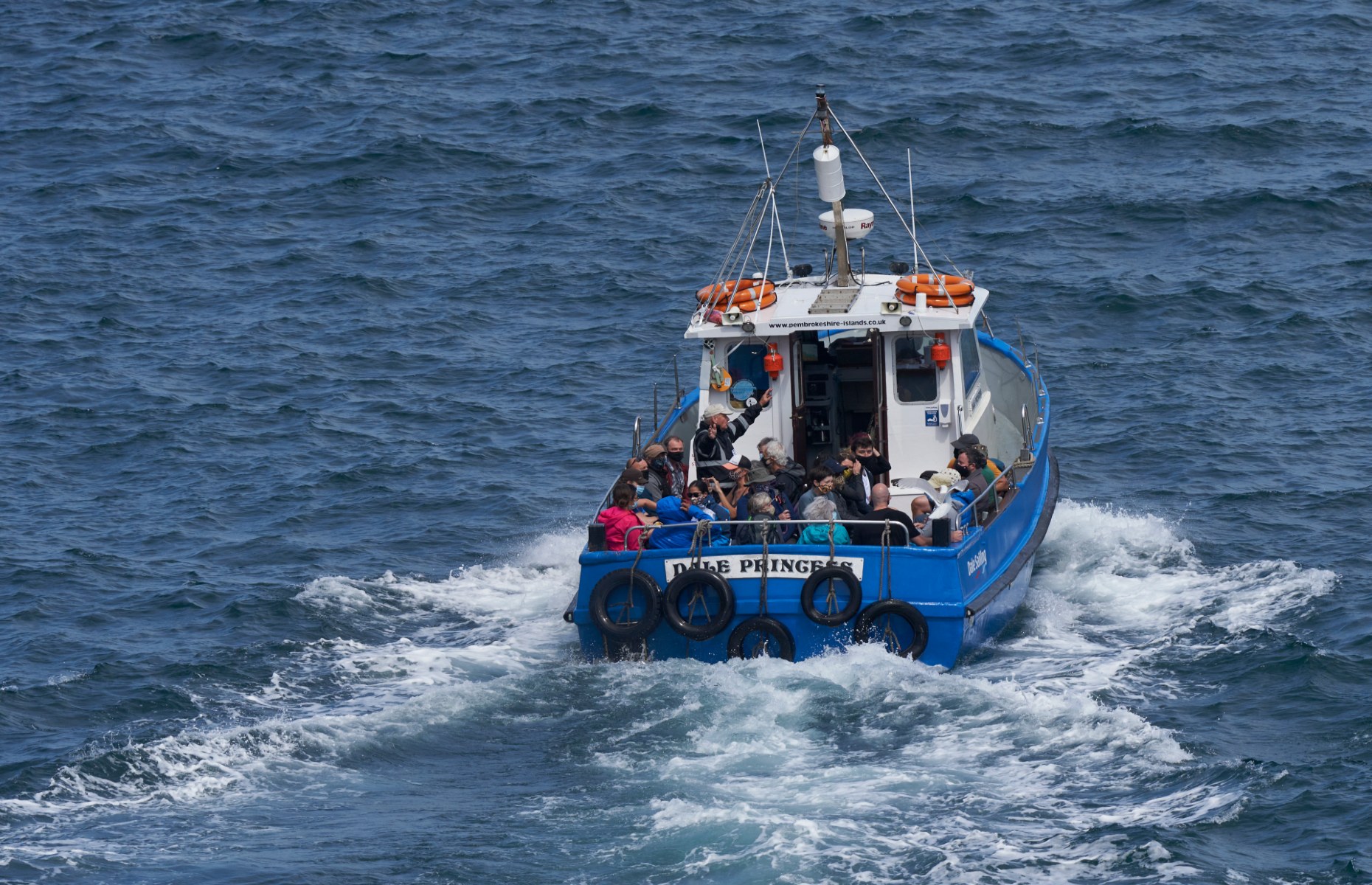 JeremyRichards/Shutterstock
JeremyRichards/Shutterstock
Make friends with the wildlife on: Skomer Island. You’ll have about four hours before your return boat, which is plenty of time to explore Skomer and take in the breathtaking scenery and dazzling array of fauna and flora.
There are guillemots, razorbills, kittiwakes, and short-eared owls, but the star attraction are the puffins. Head to The Wick on the south side of the island to get extra close to these adorable little seabirds as they scurry in and out of their burrows. There are no facilities, so you’ll need to bring a packed lunch.
Go for a paddle at: Marloes Sands. This mile-long curved sandy beach is a great place to reflect after your thrilling puffin encounter. The beach faces west, so if the weather’s good, stay late and watch the sunset.
Overnight at: St. Katharine’s House. Located in Milford Haven, another pretty Welsh harbour town about 30 minutes’ drive from Marloes Sands, this is a recently refurbished former rectory offering boutique B&B accommodation just a short walk from the marina.
Dine at: Martha’s Vineyard. A family-run bar and restaurant with glorious views over the Milford Haven Waterway. Try the signature bouillabaisse made with fresh market fish and shellfish, one of the scrumptious steak burgers with all the trimmings or one of their 21-day-aged Pembrokeshire steaks.
Day 4: Solva and St David’s
Drive to: Solva. A 40-minute drive north around the edge of St Brides Bay brings you to the picturesque fishing village of Solva. At high tide small boats bob in the harbour; at low tide it becomes a sandy beach with rock pools and a small river running through it which is perfect for catching crabs.
Explore Solva’s art galleries and gift shops or cross the river and take one of the trails up the hill on the other side for epic views over the inlet and out to sea.
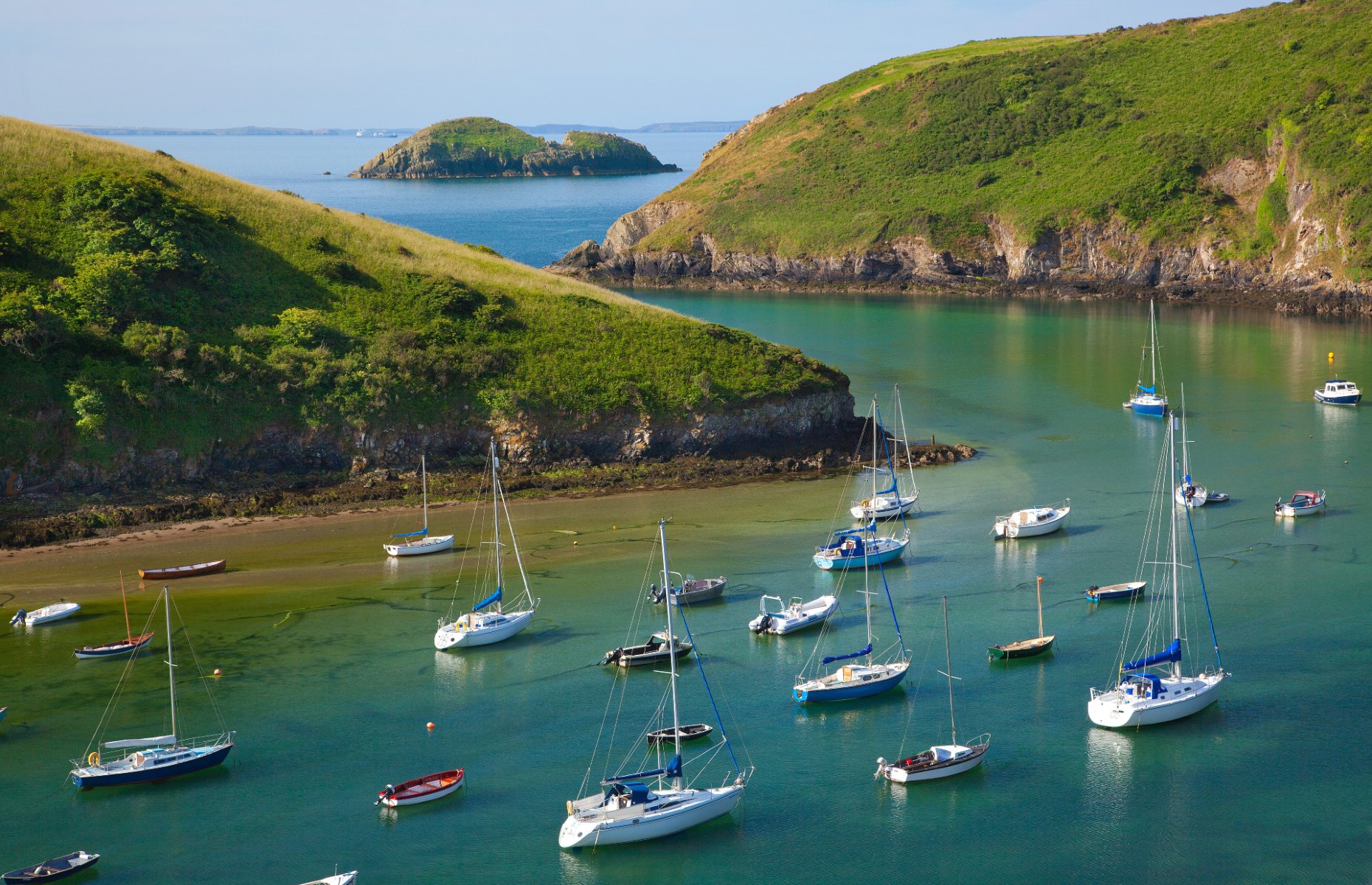 Billy Stock/Shutterstock
Billy Stock/Shutterstock
Lunch at: Grub Kitchen. Located just outside St David’s, this unique farm and restaurant aims to encourage the use of edible insects as a sustainable food source. Try the bug tasting board with a selection of plain and seasoned insect treats or the cricket falafels with tzatziki. But don’t worry if that all sounds too much for you, they do ‘normal’ meals too.
Wander the streets of: St David’s, the UK’s smallest city. St David’s may have city status but it's really just a small town, with only one main street and a small handful of shops, cafés and pubs. Buy handmade truffles and fudge in Chapel Chocolates, or try the ‘Pembrokeshire Promise’ ice cream, a honeycomb and vanilla-flavoured treat from Gianni’s ice cream parlour in the high street.
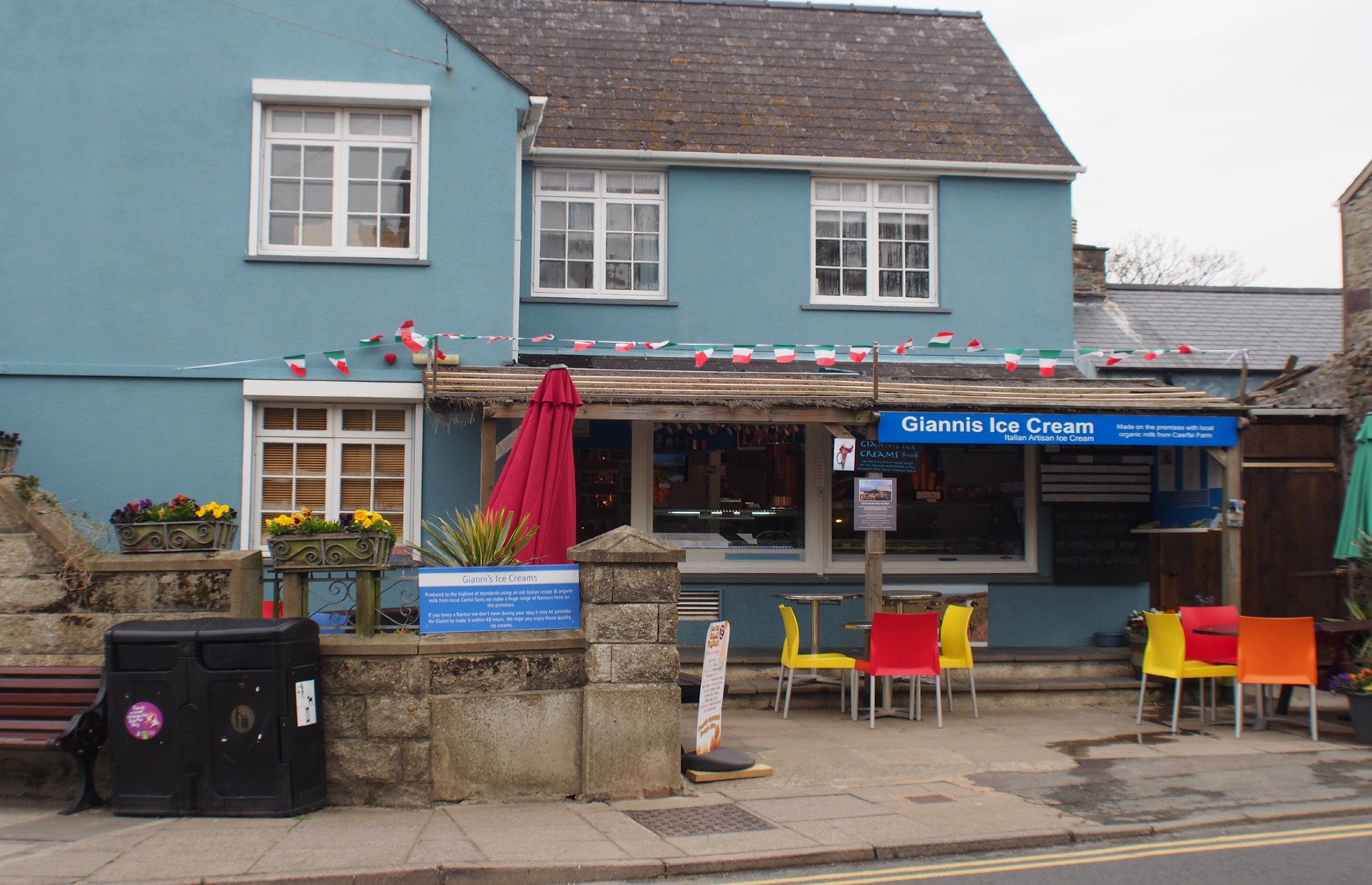 Heatheronhertravels.com/Flickr
Heatheronhertravels.com/Flickr
Admire the beauty of: St David’s Cathedral. The city’s star attraction, an iconic edifice founded in the 12th century, with a magnificent tower and ornate carved timber ceiling. Don’t miss the shrine to St David himself, a place of pilgrimage for over 800 years, and the crumbling ruins of the once-imposing Bishop’s Palace next door.
Overnight at: St Davids Cross Hotel. A traditional hotel located right in the heart of St David's, with spacious, comfortable rooms, a cosy restaurant and bar, and a shady garden for alfresco dining.
Day 5: Blue Lagoon, Porthgain, Dinas Island, Newport
Leap into the unknown at: the Blue Lagoon. This is a former slate quarry that was decommissioned and flooded, creating an 82-foot-deep (25m) lake filled with water tinted vivid blue by the minerals from the slate. Thanks to its depth and steep sides, the lagoon is now a hub for coasteering and cliff jumping – sessions last three hours and depart from Abereiddy Beach Car Park.
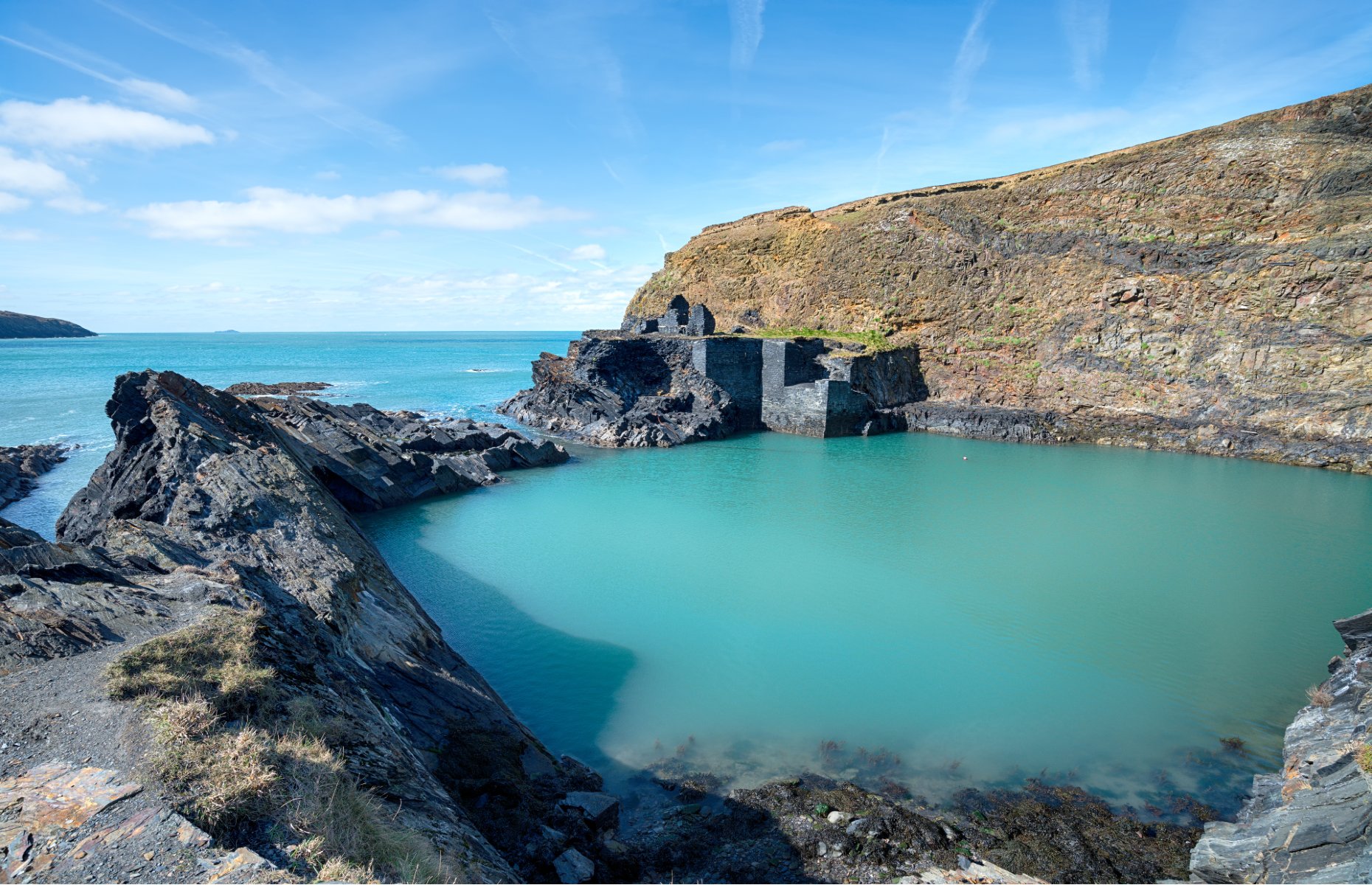 Helen Hotson/Shutterstock
Helen Hotson/Shutterstock
Lunch at: The Shed, Porthgain. A 15-minute drive east brings you to the village of Porthgain, once an industrial harbour town for shipping out the local slate, and now mostly famous for the fish’n’chips served at The Shed. In peak season you’ll need to book ahead – the huge, perfectly-cooked portions of beer-battered hake or cod are legendary.
Admire the views at: Strumble Head Lighthouse. The wild and windswept promontory at Strumble Head is topped by a lonely lighthouse, where gulls swoop and call and, if you’re lucky, you might spot a passing pod of porpoises or the occasional grey seal.
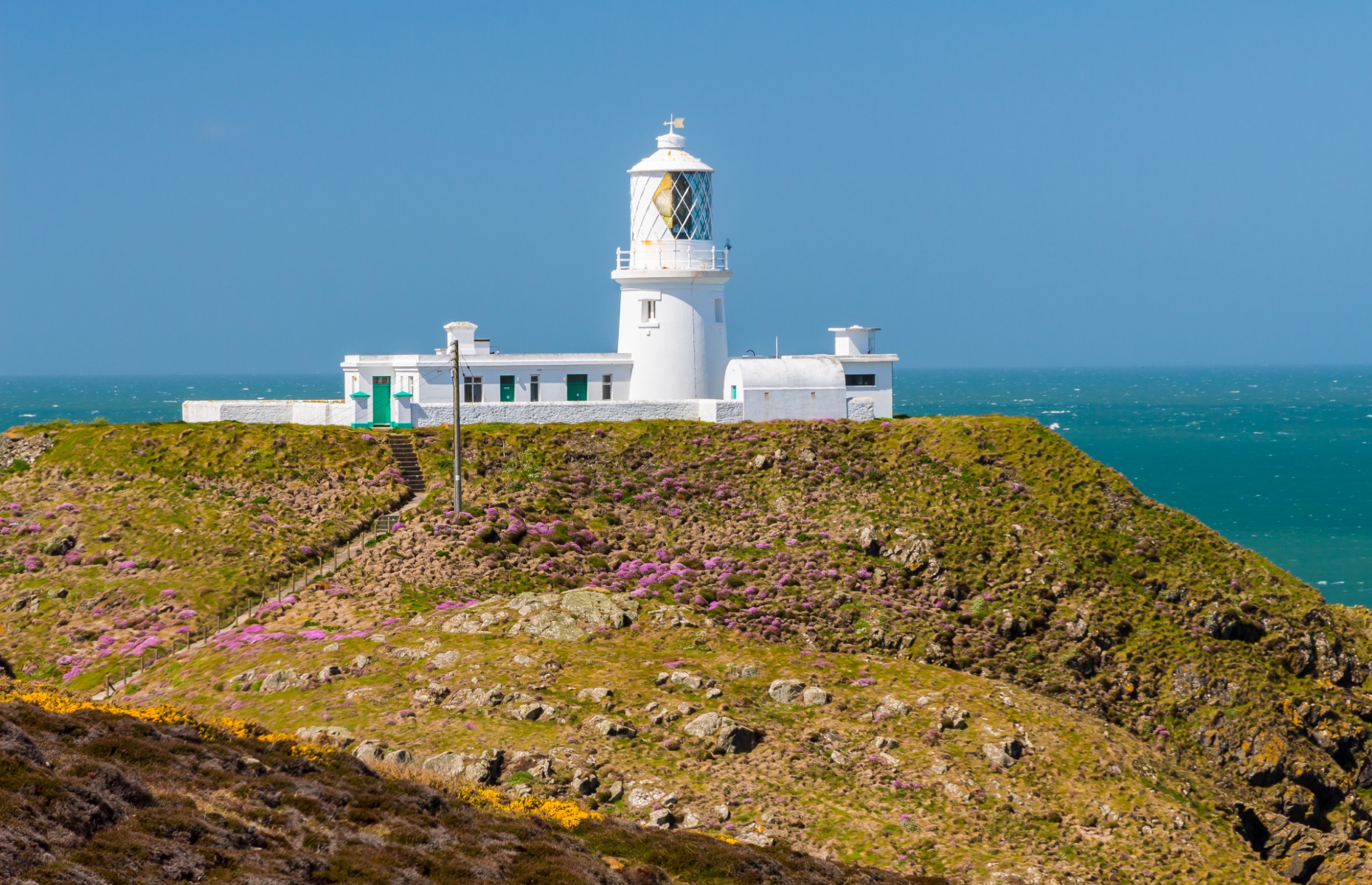 ian woolcock/Shutterstock
ian woolcock/Shutterstock
Walk off your lunch at: Dinas Island. Not actually an island but a peninsula, Dinas Island offers a spectacular three-mile (4.8km) circular Coast Path walk with steep ascents and descents and some of the most breathtaking views anywhere in Pembrokeshire.
The walk starts from Pwllgwaelod Beach and takes about two hours; reward yourself at the end with a pint in the Old Sailors pub next to the car park.
End your journey in: Newport. Another idyllic coastal village in the heart of the Pembrokeshire National Park, Newport is a great place to end your road trip. Take a sunset stroll on Newport Sands beach, or have a well-earned drink in the Golden Lion gastropub.
Lead image: Ian Fletcher/Shutterstock
READ MORE: Explore the Wales Coast Path
Map of Pembrokeshire
Comments
Be the first to comment
Do you want to comment on this article? You need to be signed in for this feature
